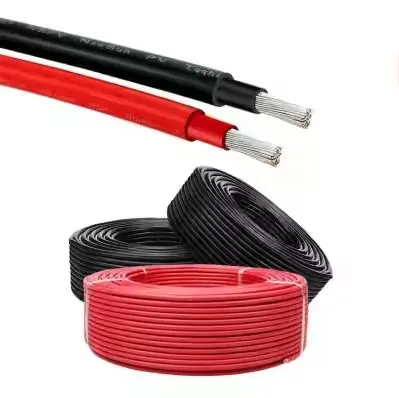Time: 2025-06-16 15:12:15 Source: Henan Province Jianyun Cable Co., Ltd.
Sourcing solar cables for large projects requires careful evaluation of technical specifications, supplier reliability, cost efficiency, and logistical feasibility. Solar cables must withstand harsh environmental conditions, ensure efficient power transmission, and comply with international standards. Key considerations include selecting cables with appropriate certifications, verifying supplier credentials, managing supply chain risks, and ensuring quality to support long-term project success.

Solar cables, typically DC cables for photovoltaic (PV) systems, must meet specific requirements for voltage ratings (e.g., 1.5 kV DC), UV resistance, and temperature tolerance (-40°C to +90°C). Common standards include EN 50618 for PV cables and UL 4703 for the US market. Use tinned copper conductors for corrosion resistance and cross-linked polyethylene (XLPE) insulation for durability. Ensure low-smoke, halogen-free (LSHF) properties for safety in case of fire. Specify cable sizes based on current-carrying capacity and project scale, typically 4 mm² to 16 mm² for PV arrays.
Choose suppliers with a proven track record in supplying solar cables for large projects. Verify credentials such as ISO 9001 for quality management and certifications like TÜV, UL, or CE for product compliance. Request samples to assess cable quality, including conductor purity and insulation integrity. Conduct factory audits or engage third-party inspectors to evaluate production capabilities. Reputable suppliers, such as those in China or Germany, often provide detailed documentation and warranties, ensuring reliability.
Solar cables typically cost $0.5–$5 per meter, depending on specifications and volume. Allocate 10–15% of the project’s electrical system budget to cabling, balancing cost with quality. Negotiate bulk discounts for large orders, but avoid suppliers offering significantly lower prices, as this may indicate inferior materials. Consider long-term costs, such as maintenance and replacement, when selecting cables. Aluminum cables may reduce upfront costs compared to copper but require larger sizes due to lower conductivity.
Plan logistics to ensure timely delivery for large projects. Sea freight, taking 3–6 weeks, is cost-effective for bulk shipments, while air freight (7–10 days) suits urgent needs. Partner with freight forwarders experienced in handling electrical goods to manage customs documentation and packaging requirements. Account for supply chain risks, such as raw material shortages or port delays, by securing multiple suppliers or maintaining buffer stock. Verify compliance with international shipping regulations for cables with hazardous components.
Implement rigorous quality control through pre-shipment and post-delivery inspections. Test cables for electrical performance (e.g., insulation resistance, voltage withstand), mechanical durability (e.g., tensile strength, bend radius), and environmental resistance (e.g., UV, water ingress). Engage third-party agencies to verify compliance with EN 50618 or UL 4703 standards. Ensure traceability through batch numbers and certification documents to address any defects. Clear quality requirements in supplier contracts minimize risks of substandard products.
| Consideration | Key Actions | Potential Risks |
|---|---|---|
| Cable Specifications | Select tinned copper, XLPE insulation, LSHF; comply with EN 50618/UL 4703 | Non-compliance with standards; unsuitable specifications |
| Supplier Selection | Verify ISO 9001, TÜV, UL; request samples, conduct audits | Unreliable suppliers; inferior quality |
| Cost Management | Allocate 10–15% budget; negotiate bulk discounts | High costs; compromised quality from low prices |
| Logistics | Use sea/air freight; partner with experienced forwarders | Delays; improper packaging |
| Quality Assurance | Conduct pre/post-shipment tests; ensure traceability | Defective products; non-compliance |
Sourcing solar cables for large projects demands a strategic approach, focusing on technical specifications, supplier reliability, cost management, logistics, and quality assurance. By selecting certified cables compliant with standards like EN 50618 or UL 4703, verifying suppliers, and allocating 10–15% of the project budget to high-quality cabling, project managers can ensure efficiency and durability. Partnering with trusted manufacturers like Jianyun Cable Co., Ltd. mitigates risks and supports successful solar installations, meeting the growing demand for renewable energy.